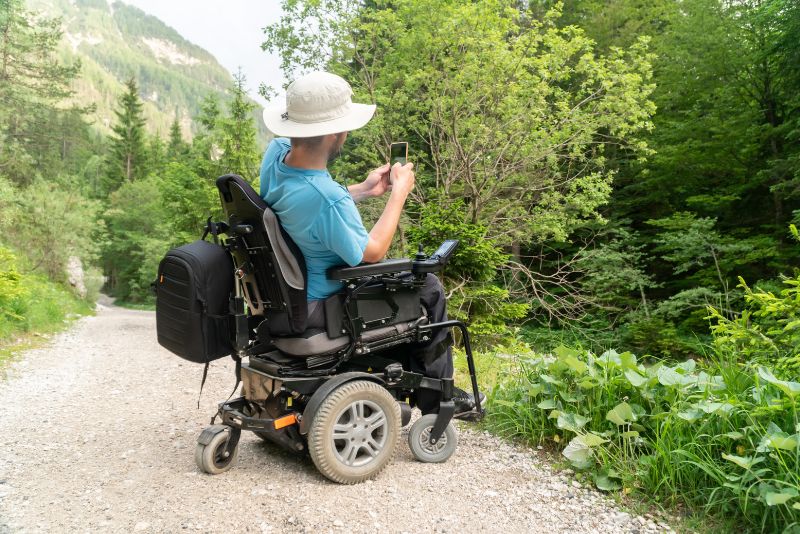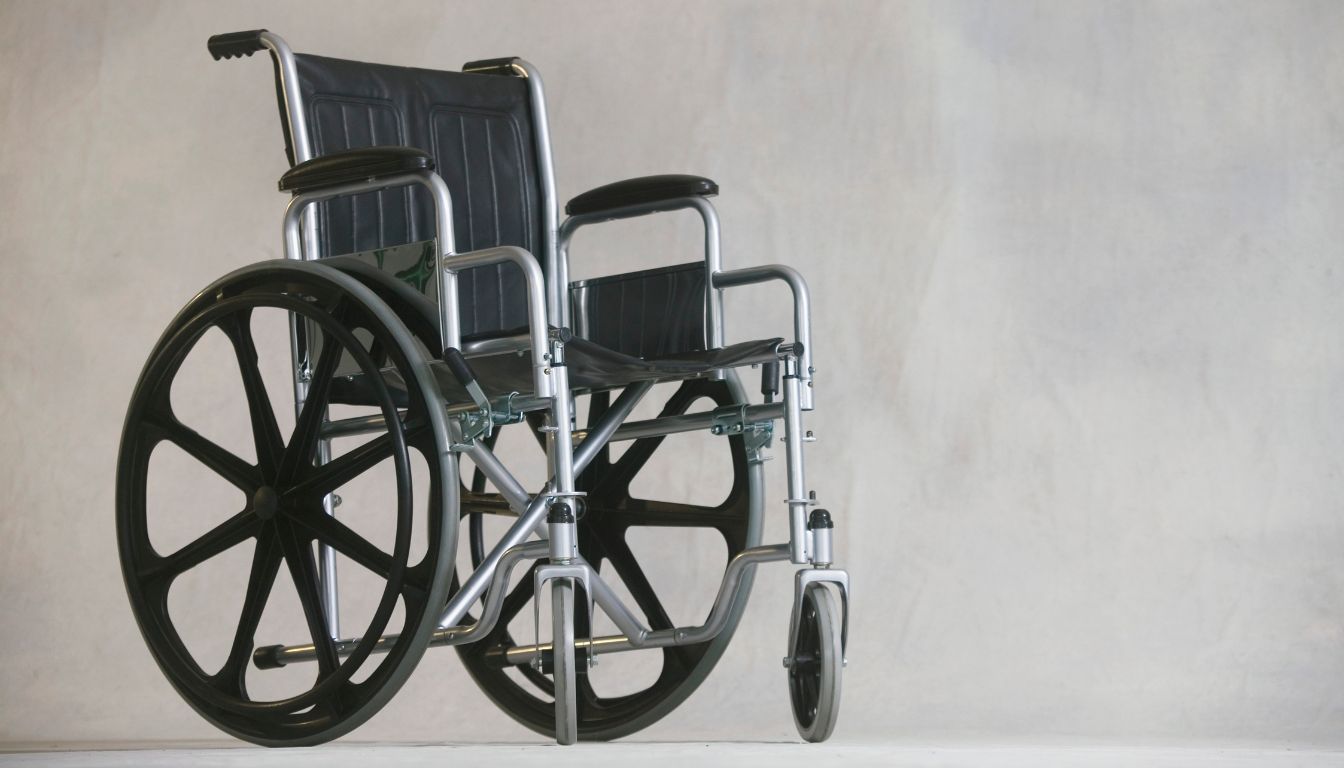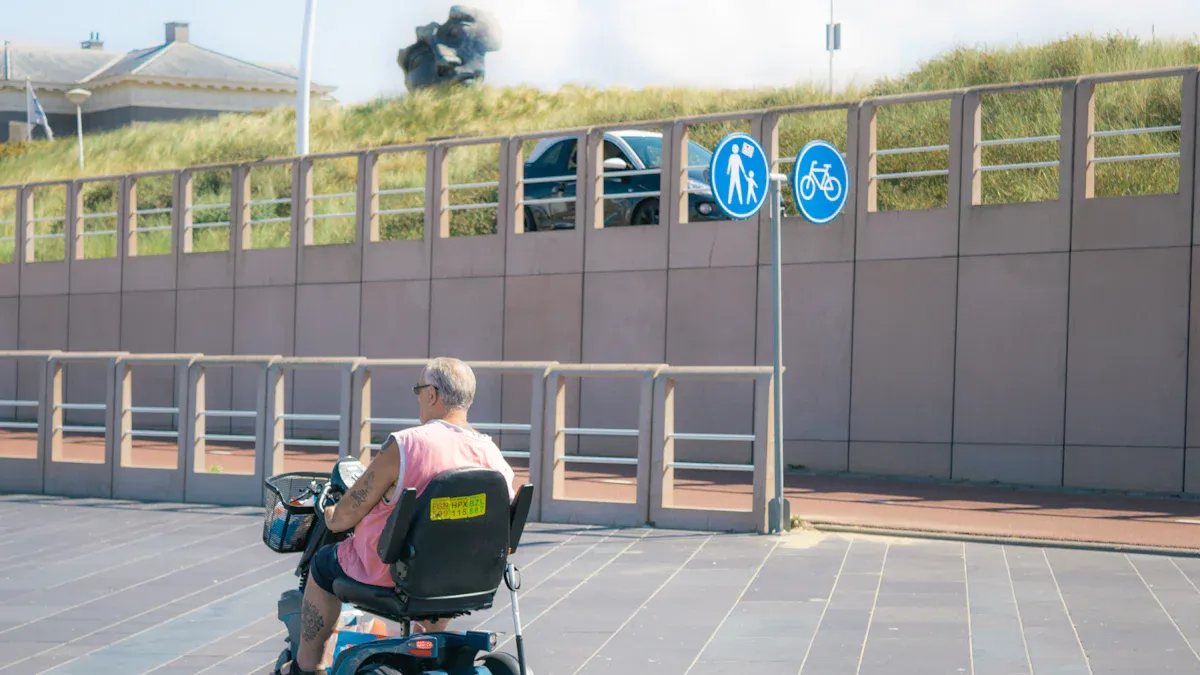Traveling should be an adventure filled with new sights, sounds, and experiences, not a logistical nightmare. But if you rely on a wheelchair, finding the right mobility aid for your journeys can feel like searching for a needle in a haystack. That’s where foldable electric wheelchairs come in as a game – changer! In this post, I’m going to share three essential tips to help you pick the most travel – friendly model. We’ll cover everything from the importance of weight and compactness, which can make or break your ability to load it into a car or onto a plane, to the crucial factor of battery life and how to keep your wheelchair powered up on the go. You’ll also learn why an easy – to – use folding and unfolding mechanism is non – negotiable for seamless travel transitions, and how durability and all – terrain adaptability ensure your wheelchair can handle the twists and turns of any journey. Get ready to unlock the secrets to stress – free travel with the perfect foldable electric wheelchair!

1. Weight and Compactness: The Key to Effortless Travel
When it comes to traveling with a foldable electric wheelchair, weight and compactness are two of the most critical factors to consider. A lightweight wheelchair is significantly easier to lift into the trunk of a car, onto a shuttle, or into the overhead compartment of an airplane. For instance, the Drive Medical Scout Spitfire EX – 1 Power Wheelchair is a popular choice among travelers. Weighing in at just 55 pounds (excluding the battery), it’s one of the lighter options on the market. This makes it manageable for most individuals to handle without straining their backs or requiring additional assistance.
Compactness is equally important. A wheelchair that folds down to a small size can fit into tight spaces, whether it’s the backseat of a compact car or the limited storage area on a train. Some models, like the Golden Technologies LiteRider, can fold to dimensions as small as 15 inches in width and 30 inches in length. This level of compactness ensures that you won’t have to worry about your wheelchair taking up excessive space or causing inconvenience during your travels.
To determine the ideal weight and size for your needs, consider your own physical capabilities and the types of transportation you’ll be using. If you frequently travel alone, a lighter and more compact model will be essential. Additionally, check the weight and size restrictions of the airlines, trains, or buses you plan to use, as these can vary significantly.
2. Battery Life and Charging on the Go
Another crucial aspect of a travel – friendly foldable electric wheelchair is its battery life. Running out of power in the middle of a trip can quickly turn an exciting adventure into a frustrating ordeal. When evaluating battery options, look for a wheelchair that offers a sufficient range for your typical travel distances. Most modern foldable electric wheelchairs can travel between 10 and 20 miles on a single charge, but some high – end models, like the Permobil M3 Corpus, can go up to 30 miles.
It’s also important to consider the charging time. Some batteries can be fully charged in as little as 4 – 6 hours, while others may take 8 – 10 hours or more. If you’re on the move and need to recharge your wheelchair quickly, a shorter charging time is a definite advantage. Portable chargers are a great investment for travelers. They allow you to charge your wheelchair battery in your hotel room, rental car, or even at a café. Just make sure to check the compatibility of the portable charger with your wheelchair’s battery.
When traveling internationally, keep in mind that electrical outlets and voltage standards vary. You may need to use a voltage converter or adapter to charge your wheelchair. Research the electrical requirements of your destination in advance and pack the necessary accessories to ensure a smooth charging experience.
3. Ease of Folding and Unfolding: Quick Transitions
The ease of folding and unfolding your electric wheelchair can make a world of difference during your travels. A complicated or difficult – to – use mechanism can lead to delays, frustration, and even injury. Manual folding systems are common in many foldable electric wheelchairs. These typically involve locking and unlocking levers or latches and then physically folding the frame. Some models, like the Merits Health P326, have a one – hand folding mechanism, which is incredibly convenient when you’re in a hurry or don’t have someone to assist you.
Powered folding systems are becoming increasingly popular for their convenience. With the push of a button, these wheelchairs automatically fold or unfold, eliminating the need for manual effort. This is especially beneficial for individuals with limited strength or dexterity. However, powered folding systems do add to the weight and cost of the wheelchair, so it’s important to weigh the benefits against these factors.
To get a feel for how easy a wheelchair is to fold and unfold, try out different models in person if possible. Watch demonstration videos online to see the process in action. Read user reviews to learn about other travelers’ experiences with specific folding mechanisms. A wheelchair that folds and unfolds smoothly and quickly will save you time and energy, allowing you to focus on enjoying your travels.
4. Durability and All – Terrain Adaptability for Unpredictable Journeys
Travel often takes us to unexpected places with a variety of terrains. Whether it’s a cobblestone street in an old European town, a sandy beach, or a gravel – filled park path, your foldable electric wheelchair needs to be able to handle the challenge. Durability is essential to ensure that your wheelchair can withstand the rigors of travel. Look for a model with a sturdy frame made from high – quality materials, such as aluminum or steel. Aluminum frames are lightweight yet strong, making them a popular choice for travel – friendly wheelchairs.
Wheel size and type also play a crucial role in all – terrain adaptability. Larger wheels, typically 12 inches or more in diameter, are better at navigating over bumps, cracks, and uneven surfaces. Tires with a good tread pattern can provide better traction on slippery or loose surfaces. Some wheelchairs also come with suspension systems that help absorb shocks and provide a smoother ride, even on rough terrain. For example, the Pride Mobility Jazzy Air 2 features a suspension system that allows it to handle a variety of terrains with ease.
Before purchasing a foldable electric wheelchair, read reviews from other travelers who have used the model in different environments. If possible, test – drive the wheelchair on various surfaces to see how it performs. A durable and all – terrain – capable wheelchair will give you the confidence to explore new places without worrying about your mobility device letting you down.
By keeping these three tips in mind – focusing on weight and compactness, battery life and charging, ease of folding and unfolding, and durability and all – terrain adaptability – you’ll be well on your way to choosing the most travel – friendly foldable electric wheelchair for your needs. With the right wheelchair, you can embark on exciting adventures and create unforgettable travel experiences, all while maintaining your independence and mobility.
FAQ
1. What is an electric folding wheelchair?
An electric folding wheelchair is a motorized mobility aid that allows individuals with limited mobility to move independently. The chair can be easily folded for storage or transport, making it ideal for users who need a compact, portable solution. It combines the ease of a traditional wheelchair with the convenience of an electric motor for powered movement.
2. How far can an electric folding wheelchair travel on a single charge?
The range of an electric folding wheelchair typically varies between 10 to 20 miles per charge. The actual range depends on several factors, including the weight of the user, terrain, and the wheelchair’s battery capacity. For longer outings or regular use, choose a wheelchair with a higher range to ensure you won’t run out of battery.
3. How long does it take to charge an electric folding wheelchair?
Charging time for an electric folding wheelchair typically ranges from 4 to 8 hours, depending on the battery type and wheelchair model. Some chairs come with a quick-charge option, allowing for faster recharging. If you need a shorter charge time, look for a model with a fast-charging battery.
4. Are electric folding wheelchairs easy to transport?
Yes, electric folding wheelchairs are designed to be portable. Most models weigh between 40 to 60 pounds, with some ultra-light models weighing as little as 30 pounds. The folding mechanism is simple and intuitive, making it easy to store in a car trunk or transport in small spaces.
5. How do I know if an electric folding wheelchair will fit my body?
To ensure comfort and support, it’s important to check the chair’s seat width, seat depth, and adjustability options. Many electric folding wheelchairs have adjustable armrests, backrests, and seating cushions to accommodate different body sizes and preferences. Try the chair before purchasing, if possible, to ensure a proper fit.
6. Can I use an electric folding wheelchair on rough terrain?
Many electric folding wheelchairs are designed to handle uneven terrain, but it’s important to choose a model with durable wheels and suspension. Look for wheelchairs that feature large, solid tires for better traction on grass, gravel, or light inclines. If you plan on using the wheelchair outdoors frequently, check for a high-performance motor that can handle more challenging surfaces.
7. Are electric folding wheelchairs safe to use?
Yes, electric folding wheelchairs are generally safe when used correctly. However, as with any powered mobility device, it’s important to read the manufacturer’s safety guidelines, use the wheelchair properly, and avoid sudden movements. Many electric folding wheelchairs come with built-in safety features like anti-tip wheels, automatic braking, and speed controls to ensure safe operation.
8. How do I maintain an electric folding wheelchair?
To ensure the longevity of your electric folding wheelchair, regular maintenance is key. Clean the chair frequently to remove dirt and debris, especially from the wheels and motor areas. Check the battery regularly for performance, and keep it charged according to the manufacturer’s instructions. It’s also a good idea to inspect the frame, wheels, and motor periodically for wear and tear.
9. Can I use an electric folding wheelchair indoors?
Yes, electric folding wheelchairs are great for both indoor and outdoor use. Many models are designed with a small turning radius and maneuverability, making them ideal for navigating tight spaces like hallways, doorways, and living rooms. If you plan to use your chair indoors regularly, look for one that offers smooth, precise control and a compact design.
10. Are there any weight limits for electric folding wheelchairs?
Yes, most electric folding wheelchairs have a weight capacity, typically ranging from 250 to 350 pounds. Make sure to choose a wheelchair that can comfortably support your weight for both safety and comfort. Some manufacturers offer models specifically designed for heavier users, so be sure to check the product specifications before making your purchase.
Tip: Check airline rules and battery details before flying for a hassle-free trip.





